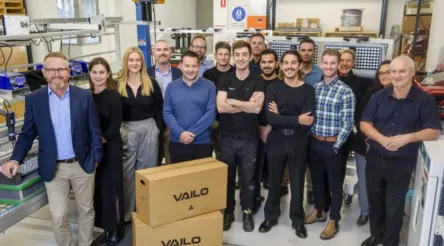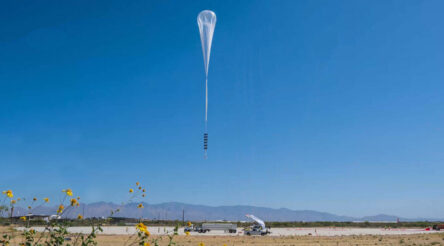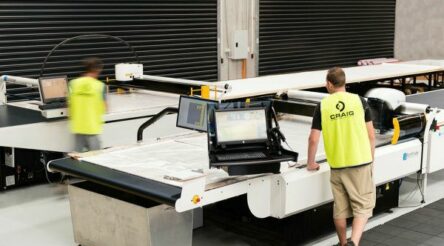Industry Growth Program features in budget news not previously leaked

By Peter Roberts
Much of the federal government’s 2023 budget has been leaked in advance, but Treasurer Jim Chalmers held back a few morsels including good news for the Industry Growth Centres in his official budget speech delivered in Canberra tonight.
In a budget the government characterised as prudent – it predicts a rare surplus not achieved by the Coalition in its nine years in power – there was little new for industry and science.
This is perhaps understandable as the government has acted swiftly on major election commitments in its first year of office including creating Jobs & Skills Australia, establishing the $15 billion National Reconstruction Fund, and developing the country’s first National Quantum Strategy. It is in the process of developing a National Robotics Strategy.
However, industry funding included a few surprises such as an investment of $392 million in an Industry Growth Program to maximise the return on taxpayers’ investments and provide a clearer pathway for entrepreneurs to turn their ideas into businesses.
The programme will offer advice and grants to start-ups and small-to-medium businesses, to help them commercialise their ideas and grow.
Via grants and mentorship, Australia’s new Industry Growth Program will expand the pipeline of investment-ready projects for the $15 billion National Reconstruction Fund to consider in coming years.
Until this announcement, the future of the Industry Growth Centres initiative of the Coalition government looked bleak as funding cuts off for the six IGC’s this year.
The centres had been mostly winding down as funds dwindled including National Energy Resources Australia which announced in February it would shut down.
However some, likely including the Advanced Manufacturing Growth Centre which had secured a new role assisting industry growth in the Northern Territory among other initiatives, will get a new lease of life.
(Read Professor Roy Green’s take on the Industry Growth Program here – Ed.)
Specifically, the government made good on its election commitment to establish a Powering Australia Industry Growth Centre, with a $15 million investment to support local manufacturing of renewable energy technology.
Industry and Science Minister Ed Husic said: “This end-to-end approach will maximise the return on taxpayers’ investments and provide a clear pathway for our entrepreneurs to turn their ideas into thriving businesses in Australia instead of overseas.”
The government has already backed a $20 million Factory of the Future at Flinders University, Adelaide, modelled on the successful UK Catapult growth centres.
In addition, the government said today it would invest $101 million in the development of Australia’s quantum and artificial intelligence industries.
Support for critical minerals including rare earths that are crucial components of low-emissions technologies such as batteries, electric vehicles and solar panels, also attracted new support.
Minister for Resources Madeline King said: “We’re developing the critical minerals industry…to make batteries and other green technologies – an integral part of our plan for Australia to become a renewable energy superpower.”
Budget funding includes:
- $57.1 million for the established Critical Minerals International Partnerships Program. This is aimed at stepping up international engagement, to attract investment from like-minded partners and accelerate projects of strategic interest
- And $21.2 million to ensure the ongoing operations of the Critical Minerals Office – which is driving policies, programmes and international engagement.
While these moves are all welcome, it is salutary to consider whether the government’s actions are in line with the scale and gravity of Australia’s industrial realities.
Australia ‘enjoys’ a relatively low OECD ranking in R&D spending, a low OECD ranking in manufacturing self-sufficiency, and in economic complexity we rank 91st out of more than 100 nations.
In other budget news funding was announced:
- of $1 billion for the Clean Energy Finance Corporation for energy efficient home upgrades
- $2 billion for a new Hydrogen Headstart programme
- $28 million over two years for Australia’s first National Climate Risk Assessment and a National Adaptation Plan
- $101 million for critical technology industries including $20 million over four years for an Australian Centre for Quantum Growth, and $40 million to incentivise business uptake
- $40 million for a National AI Centre and funding for businesses to adopt AI technologies
- $9 million for STEM education programmes
- And $20.9 million over five years for decarbonising transport and infrastructure, including developing a Transport and Infrastructure Net Zero Roadmap and Action Plan.
The government also announced $6.7 million in funding to develop a Future Gas Strategy to support a goal to reach 82 per cent renewables by 2030.
There was also $14.3 million to partner with the Queensland Government in R&D into reducing emissions in the energy resources sector.
The budget was mostly upstaged by previous announcements as well as strategic leaks by the government.
Most importantly the government has already revealed its response to the Defence Strategic Review, involving $19 billion in funding and $7.8 billion in savings on existing programmes.
That spending includes $3.8 billion for defence infrastructure in northern Australia, $4.1 billion for long-range strike weapons and to develop missile manufacturing capacity, and $3.4 billion over 10 years for an Advanced Strategic Capabilities Accelerator to spur defence industry innovation.
Also previously revealed:
- Small business energy bill relief of $314 million to help up to 3.8 million SMEs save on energy bills through tax deductions for investing in the efficient use of energy
- Creation of a National Net Zero Authority to help workers and companies in polluting industries such as coal, gas or manufacturing to transition to cleaner industries
- $146.1 million to support electric vehicle uptake
- And Petroleum Resources Rent Tax reform to raise $2.4 billion.
Further reading:
INDUSTRY GROWTH PROGRAM ‘MODEST BUT WELL CONSIDERED’ – BY ROY GREEN
Picture: Treasurer Jim Chalmers
@aumanufacturing Sections
Analysis and Commentary Awards Defence Manufacturing News Podcast Technology Videos










